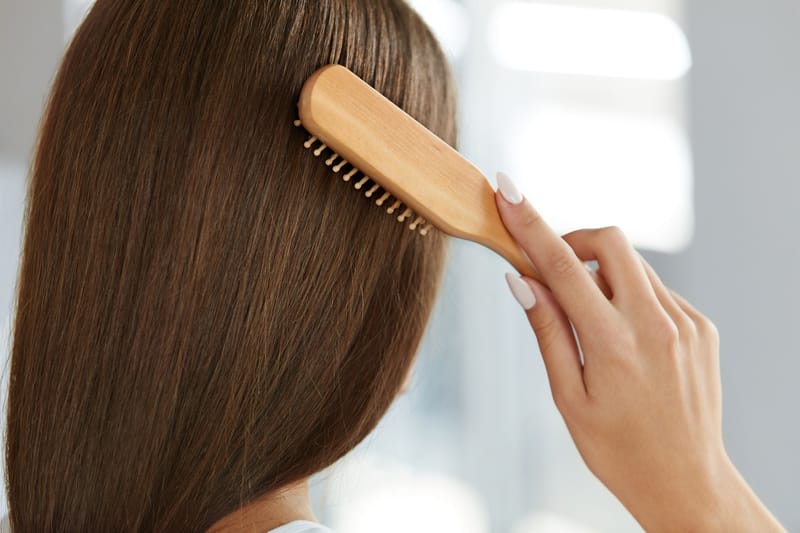
Embrace Your Unique Strands by Understanding Hair Texture and Types
Having beautiful and healthy hair is a desire that most people share. However, achieving and maintaining gorgeous hair requires an understanding of its unique characteristics, including hair texture and types. By embracing your unique strands and learning about these aspects, you can tailor your hair care routine to meet your specific needs. We will explore everything you need to know about hair texture and types, from understanding the basics to providing practical tips for caring for your locks.
Hair Texture: The Foundation of Your Strands
Your hair texture refers to the thickness or diameter of your individual hair strands. It is categorized into three main types: fine, medium, and coarse. Understanding your hair texture is crucial as it determines how your hair behaves and what products and styling techniques work best for you.
Fine Hair: Delicate Strands with Special Needs
Fine hair is characterized by thin strands that have a smaller diameter. It tends to be delicate and more prone to damage, breakage, and limpness. People with fine hair often struggle with creating volume and maintaining styles for an extended period.
To care for fine hair, it is essential to choose lightweight, volumizing products that add body without weighing the hair down. Avoid heavy conditioners and styling products that can make your hair appear flat. Additionally, using a wide-toothed comb or a brush specifically designed for fine hair can help prevent breakage while detangling.
Medium Hair: Versatile and Manageable
Medium hair falls between fine and coarse hair in terms of thickness. It is the most common hair texture and offers versatility in styling. Medium hair is generally more manageable than fine or coarse hair and can hold styles well.
To maintain medium hair, it is important to strike a balance between moisture and volume. Use a moisturizing shampoo and conditioner to keep your hair hydrated, and opt for styling products that provide hold without weighing your strands down. Regular trims can also help prevent split ends and keep your hair looking healthy and vibrant.
Coarse Hair: Thick and Strong
Coarse hair has a larger diameter and tends to be thicker and stronger than fine or medium hair. It is often more resistant to breakage but can be challenging to style due to its natural density.
To care for coarse hair, focus on moisturizing and nourishing your strands. Look for rich, hydrating shampoos and conditioners that provide deep moisture and help combat frizz. Additionally, using hair oils or serums can add extra shine and manageability to your coarse locks.
Hair Types: Unique Strands
While hair texture determines the thickness of your individual strands, hair type refers to the overall shape and pattern of your hair. Hair types are classified into various categories based on the widely recognized Andre Walker Hair Typing System.
Type 1: Straight Hair
Type 1 hair is naturally straight and lacks significant waves or curls. It is further divided into three subcategories:
- Type 1A: Fine, thin, and delicate straight hair.
- Type 1B: Medium-textured straight hair with more volume.
- Type 1C: Coarse and thicker straight hair that may have some natural body.
Straight hair tends to be shiny but can appear flat. It is important to use volumizing products sparingly and avoid excessive heat styling to prevent damage.
Type 2: Wavy Hair
Type 2 hair has a defined S-shaped pattern and ranges from loose, gentle waves to more pronounced ones. It is further divided into three subcategories:
- Type 2A: Loose and fine waves that are relatively easy to manage.
- Type 2B: Medium-textured waves with more defined patterns and some frizz.
- Type 2C: Coarse waves that may border on curly hair, prone to frizz and volume challenges.
Wavy hair benefits from products that enhance and define the natural waves. Using a diffuser when blow-drying can help create more bounce and movement.
Type 3: Curly Hair
Type 3 hair is characterized by well-defined curls that range from loose to tight coils. It is further divided into three subcategories:
- Type 3A: Large, loose curls with a defined S-pattern.
- Type 3B: Medium-sized curls that may have a more spiral or ringlet-like shape.
- Type 3C: Tight, corkscrew curls with more volume and density.
Curly hair requires extra moisture to maintain its shape and minimize frizz. Using curl-enhancing products, such as creams or gels, can help define and control your curls.
Type 4: Coily Hair
Type 4 hair is characterized by tightly coiled or kinky strands. It is further divided into two subcategories:
- Type 4A: Tightly coiled, S-shaped curls with a defined pattern.
- Type 4B: Z-shaped or zigzag coils with less defined curl patterns and more shrinkage.
Coily hair tends to be fragile and dry, requiring regular deep conditioning and moisturizing. Protective styles, such as braids or twists, can help protect the hair and promote length retention.
Understanding your hair texture and type is the key to embracing your unique strands and caring for them effectively. Whether you have fine, medium, or coarse hair, and whether your hair is straight, wavy, curly, or coily, knowing how to cater to its specific needs will help you achieve healthy, vibrant, and beautiful hair. Remember to choose products and styling techniques that enhance your natural texture, and always prioritize moisture and protection to keep your hair looking its best.
By following the tips and guidelines provided in this article, you'll be well-equipped to navigate the world of hair care and make informed choices that suit your unique strands. Embrace your hair's texture and type, and celebrate the beauty and individuality of your locks.
Ready to embrace your unique strands and unlock the full potential of your hair? Contact our expert team today to receive personalized advice and discover the perfect hair care routine for you. Let us help you achieve healthy, beautiful hair that truly reflects your individuality.


